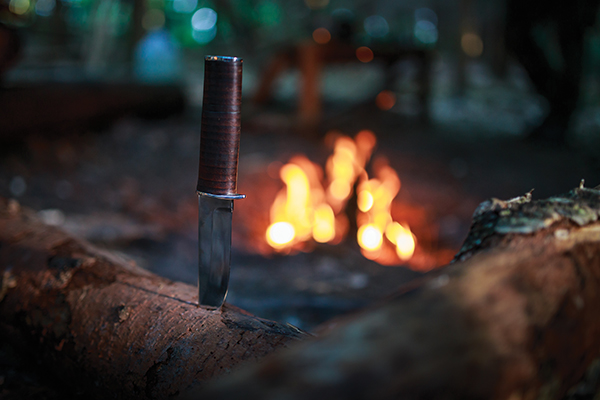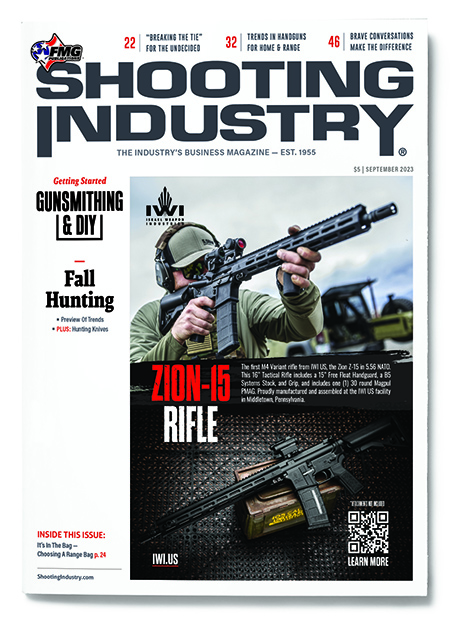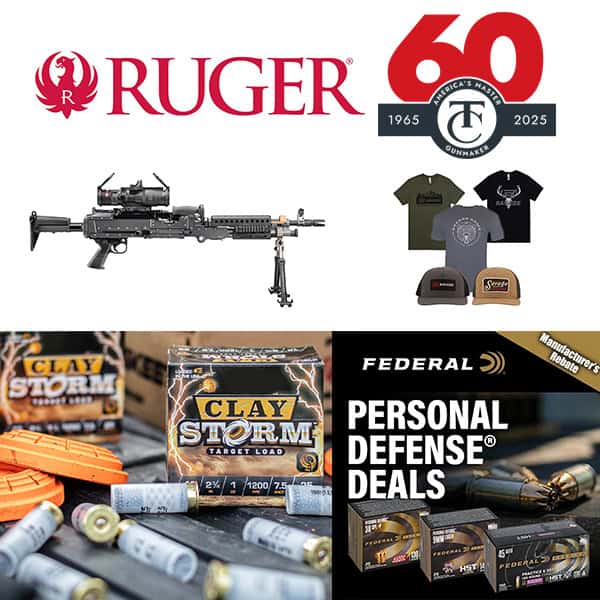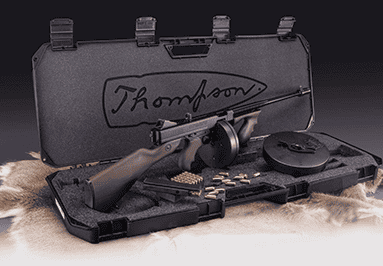Dress For Success!
There Are Big Profits To Be Had In Hunting Knives
If you’re looking to fatten up your bottom line in the upcoming game seasons look no further than hunting knives.
All hunters need one good hunting knife, but more often than not they’ll carry or stow two and even three. While hunting knives are somewhat seasonal, they’re not restricted to the rigid “hunting seasons” designated by individual states. This raises questions for the firearms retailer as to when to stock up on knives for their customers.
To help us sort this out, we’ve recruited a couple of experts from the cutlery manufacturing industry that specialize in hunting and outdoor knives. John Cammenga is the founder and president of White River Knives, a company specializing in middle- and upper-end knives for outdoor enthusiasts, including hunters. Craig Powell is the general manager for nine years running at TOPS Knives, which has an abundant line of affordable hunting and outdoor knives — as well as tactical fare. Both companies are highly respected in their end of the hunting market.
The Seasonal Factor
First, we asked our experts about the seasonal effect annual hunting seasons have on hunting knife sales.
“We do experience some season-specific sales bumps,” lends White River’s Cammenga. “In the spring there’s often an increase in our fillet knives and in the early fall our hunting knife sales increase — especially in the Midwest, Southeast and upper Northwest. Our bushcraft and survival models stay strong and steady all year.”
As for TOPS Knives, Powell notes, “We do see an uptick in the summer months leading up to September and October, but it’s not substantially higher than any other time throughout the year necessarily. This is probably due to the fact a lot of our hunting knives are great for other cutting tasks, too.”
To Powell’s point, an overwhelming number of hunters choose the drop-point blade style because it has the ability to wear a lot of hats.
Notice neither of our two experts mentioned radical swings due to designated annual hunting seasons. Firearms calibers are very important to the hunter depending on the size and type of the game they’re pursuing, but one game-processing knife can cover a wide variety of animals.
Take skinning knives as an example. A hunter can cover all his processing bases with a mid-to-large size skinner and one for small game such as a bird and trout knife. An average hunting knife with a 4″ blade — such as the aforementioned drop point — can crossover from game-processing chores to light camp duties effortlessly. The average bushcraft knife has a 4″ blade so it’s easy to see how knives can be multi-purpose. Also remember: there are no hard and fast rules with hunting knives. I’ve seen seasoned hunters filet fish and skin game with a large 6″ drop-point blade — and they wouldn’t have it any other way.
It helps to have your cutlery buyer or a sales associate who takes a special interest in knives on staff to help ‘fill in the blanks’ during a sale.
Getting The Word Out
White River Knives uses social media and its website wisely to keep customers informed and they recommend their dealers do the same.
According to Cammenga, “For dealers who have a strong social media presence, we like to announce when we’re sending them limited or exclusive editions. If we’ve been out of stock on certain models and they are available again, we spread that information as well.”
This not only keeps their customers informed, but also creates ongoing top-of-mind awareness. Cammenga recommends a measured approach.
“We always prompt customers to subscribe to our newsletter,” he notes. “Then, we only send mass emails when posting new or updated information on our website. As consumers, we don’t like constant emails from any source and assume our customers don’t either. In doing so, we experience only a fraction of customers who eventually unsubscribe.”
The Secondary Sale
TOPS’ Powell recommends knives as secondary sales to boost your bottom line.
“For a firearms retailer, knives are a great way to get customers to make supplemental purchases. Every time I buy or see someone buy a new firearm, accessories are offered immediately like optics, carry case, range bag, extra ammo, etc. Knives should be an automatic and easy option to include in the conversation. If someone is buying a hunting rifle, then it’s the absolute best time to make sure they have a solid hunting knife to go along with it. In other words, strike when the iron is hot,” he reasoned.
We asked our experts about the importance of stocking fresh, hot new knives on their shelves.
“By making sure you have all the newest gear available when it comes out, you put yourself in a position to be the go-to for all gear, not just new stuff,” Powell stated. “Exciting new products are important to keep customers engaged — especially in the age of social media. But make sure it’s a great product before bringing it to your customers!”
The good news here is more and more customers know what they want before they ever come into your store. The challenge is to have it in stock for them. It helps to have your cutlery buyer or a sales associate who takes a special interest in knives on staff to help “fill in the blanks” during a sale.
Knowledge Sells Product
The adage “A little bit of knowledge goes a long way” is very true in selling any product and knives are no exception.
“The simple answer to selling more cutlery to customers is for your sales force to be knowledgeable about the features of your knives so they can sell them effectively based on their customer’s needs and preferences,” Powell said.
Fortunately, most retailers that sell hunting firearms have experienced practitioners of the sport with a working knowledge of all aspects of hunting, camping, dressing game and the like already on staff. Make them your go-to person to assist fellow associates. Also, it never hurts to devote a sales meeting to accessories — including knives — to harvest those valuable secondary sales.
Today we’re seeing more manufacturers turning to hunting and outdoor knives as an alternative to getting deeper into a crowded tactical knife market that has ruled the industry for some 25 years now. This is good news for the storefront firearms retailer as many sell hunting fare.
Better yet, profit margins are better in the cutlery end than in the highly competitive gun market. Isn’t it time you fattened up your bottom line with the highly lucrative market that is hunting knife sales?






